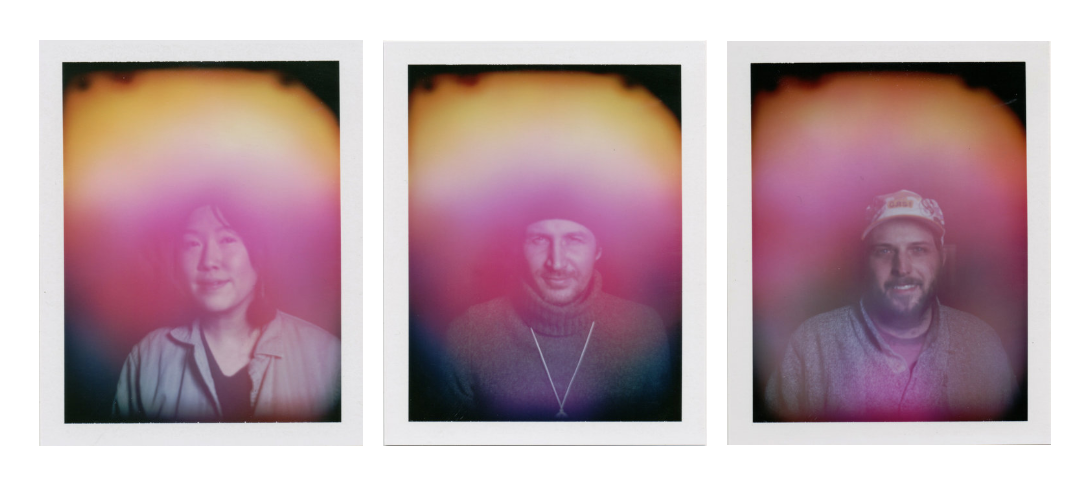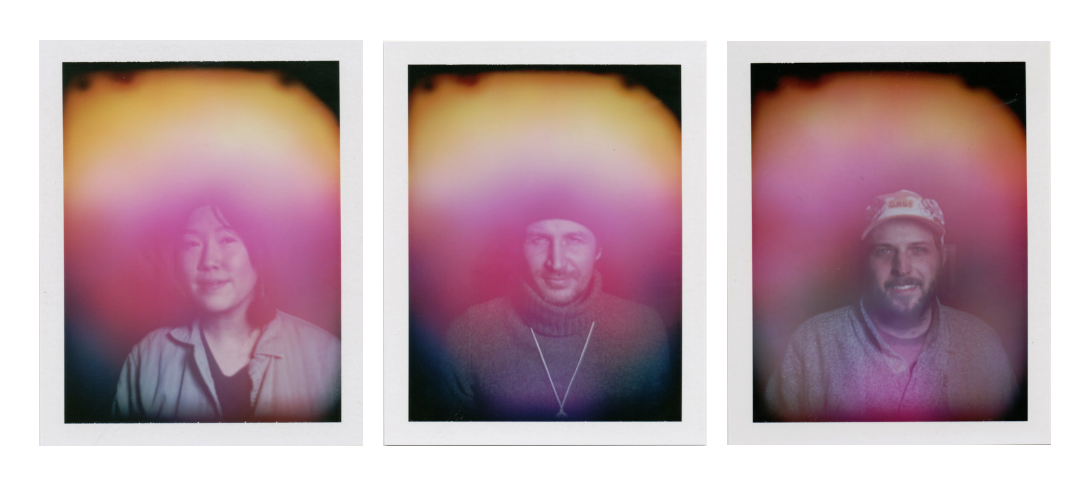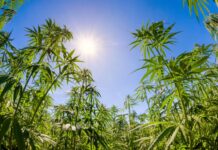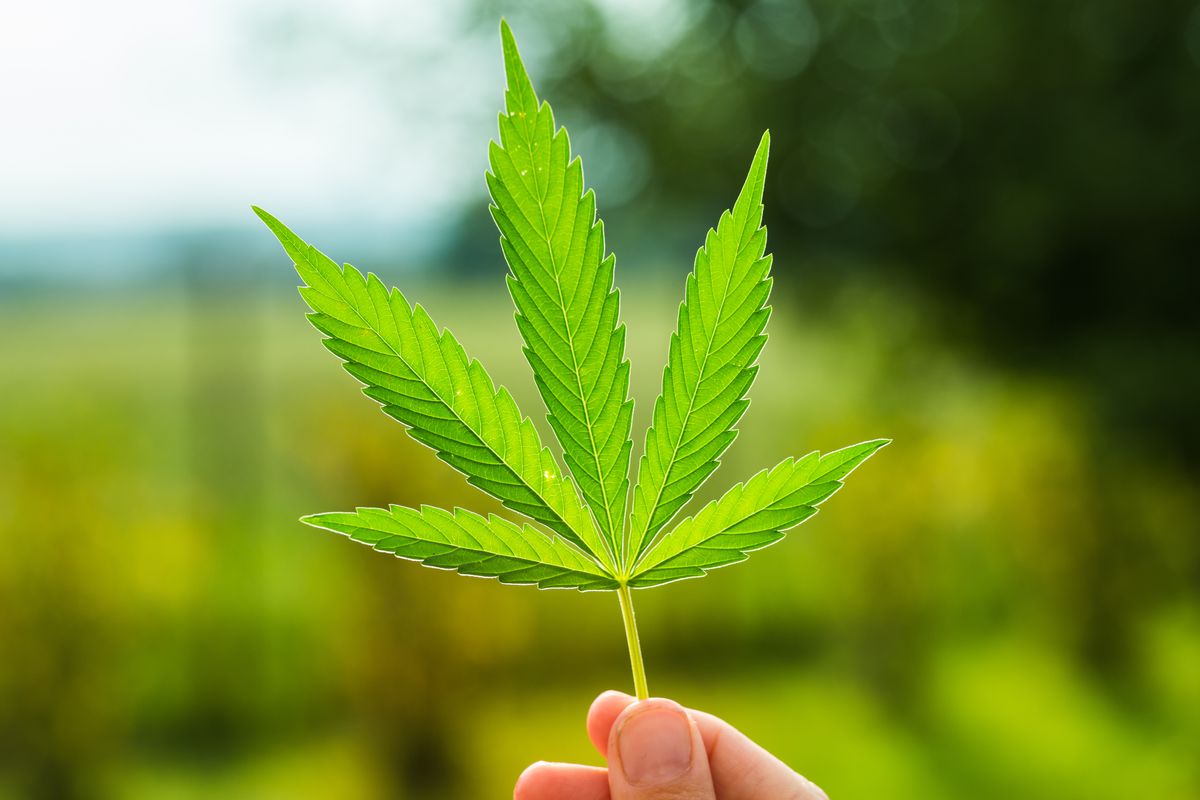
Colors hover above stoney, smiling faces. The people emanate a cloud of red and yellow as a little focused bit of red hovers above their heart spaces.
This is what your aura looks like when you’re high on Strawberry Fields.
Aura photography is a visual representation of the radiation fields that surrounds you. The art form is transforming into more than just a highly desired addition to your Instagram feed. One Detroit-based photographer, Eileen Lee, is capturing people’s auras after they smoke specific strains of weed.
“I thought it was so interesting,” said Lee. “What if people could visualize the high? For me, if you can visualize it, that’s so much easier to relate to.”
Lee, who describes herself as a photographer in the metaphysical medium for two years, is the founder of Aura Aura, a pop-up photography project that tours the U.S. documenting people’s colorful emanations. Its home is at the art gallery Grey Area in Detroit, where Lee unveiled The Cannabis Experiments on April 20, 2019.
What Is Aura Photography?
The term “aura” was coined in the early 19th century (a January 2019 Artsy article details the history of aura photography) after the discovery of X-rays. It was then that the concept of capturing “invisible energy” became possible, evolving in 1910 into electrography, then Kirlian photography. In the 1970s Guy Coggins used Russian inventor Semyon Kirlian’s methods as the basis to produce commercial cameras capable of instant photography. Coggins created the AuraCam, the most commonly used today.
For “The Cannabis Experiments.” artist Eileen Lee, left, is photographing close friends’ auras after they consumed White Fire OG. (Photo courtesy of Eileen Lee)
Lee uses an AuraCam 6000. The camera interacts with two silver-laced handplates with sensors that, as she explained, “read the meridian points in your hands. [The technology] is understanding where within the body the energy comes from. It sends all that info of your vibrational frequency to the camera. The camera has an algorithm that translates each frequency to the corresponding color.”
While each psychic interprets colors mean differently, the representation of colors and their placements, according to Aura Aura’s website:
- Red indicates a connection to the material, physical world.
- Pink is rare and shows up when someone radiates a loving, gentle vibe.
- Orange relates to creativity and sensuality.
- Yellow indicates confidence, esteem, and energy.
- Tan represents logic and analysis.
- Green shows growth and healing.
- Blue signifies communication and self-expression.
Enter ‘The Cannabis Experiments’
Yes, aura photography can be considered based on science or woo-woo, depending on who you ask, but it’s been a growing trend that has invaded your Instagram feed nevertheless. Lee applied this concept of energetic visualization to weed to see “stoned auras.”
“It was all kind of an accident,” Lee said of the first time she photographed stoned auras. “After a long day of sessions, friends would stop by and we would smoke a joint. We smoked together and I had already taken their regular aura photos when my boyfriend was like, ‘What do our auras look like now?’ ”
Lee noticed in her first cannabis aura photos that the colors were focused in the space around her subjects’ heads. “For a while I thought, ‘that’s what your aura looks like high.’ ”
In her photo series “The Cannabis Experiments”, photographer Eileen Lee, center, captures the aura of herself and friends about five minutes after they smoke a joint of a specific cannabis strain. (Photo courtesy Eileen Lee)
“The second time I tried, it was the Strawberry Fields series. The three that I’ve shown were taken right after we smoked, about five minutes,” Lee said. She photographed effects up to 40 minutes after, but the aura became more subtle over time. “I like how prominent it looks when you take the photo right after smoking.”
Lee chose strains that people within the cannabis community may have encountered before. “The strains that I picked initially, I was trying to go towards originals, strains that have been around for at least 10 years.”
For her inaugural experiment, Lee displayed photos from five classic strains: Strawberry Fields, Blue Dream, GSC, Pineapple Express, and White Fire OG.
“With cannabis, you see an emphasis on the headspace.” Lee said. “It represents, you’re more in the present moment.”
Lee’s experiment had certain boundaries. “I am putting in controls. Like you would any experiment. One control factor is, I need to limit it to close friends, because the energy could be off if you smoke with strangers.”
“It’s just one joint. I limit the smoke sesh to three people.” Other boundaries include the amount each subject smokes enough so that the person is “definitely high.”
Artist Eileen Lee, right, said she was sick during this shoot but still wanted to include her image because each of the three, who all used Pineapple Express, had a similarity: the blue aura wrapping on the sides. (Photo courtesy of Eileen Lee)
What Being High Looks Like
So what does a stoned aura exactly look like? And what is the benefit of seeing, for that matter?
“My focus with this experiment is to really elevate cannabis as medicine. And help to break down that stigma that has always been traditionally found with cannabis,” Lee said. “That’s what the industry slowly is working towards.”
In addition to being a full-time artist, Lee is an advocate with her own stake in the cannabis industry, as an investor in Michigan microdose tablet manufacturing company PureGreen.
“The goal with it really is to just be able to help people visualize and see what the effects of that strain are. We are such visual creatures. To be able to educate consumers with what a strain will make them feel like is helpful.”
For her art installation, “The Cannabis Experiments,” artist Eileen Lee and two friends posed for aura photographs following a session consuming Blue Dream. According to Lee: “Blue Dream balances full-body relaxation with gentle cerebral invigoration. Blue Dream is versatile and easily lovable option for most any type of smoker. It often leaves its users with an uplifted, relaxed feeling, paired with a euphoria that is not only creative, but also energizing.”
Her psychic interpretations of what each aura represents mirror the written descriptions of strains, Lee found. “The description for Pineapple Express, as I continued to pull from sources, was that it, ‘keeps the mind sharp and concentrated’. When you look at Chris’ and Lillyanna’s photos, the left brain is really activated, which represents the thinking and analyzing part of the headspace.”
In the case of Strawberry Fields, each person’s auras are quite similar. This “blanket” phenomenon varies, as Lee explained: “I did more experiments and saw, this commonality is different, strain by strain. There are some strains where the energy for all is blanketed. But White Fire OG or Blue Dream, which is one of my favorite strains, the auras were all different. For me, Blue Dream puts me in my creative zone, which is seen in the aura.”
Another strain that’s “an outlier”, according to Lee, is Pineapple Express. “In my photo, it looks like I have no energy because I was actually sick and very tired that day. But you can still see how the blue is in the sides, so I found value in including it. There are other strains I plan to do,” she said. “It’s something I’m going to keep experimenting with.”















